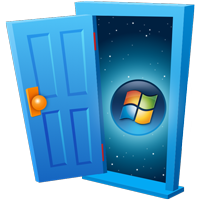This tutorial was made using VirtualBox and this ISO file downloaded from MSDN: en_windows_10_multiple_editions_version_1511_x64_dvd_7223712.iso
General disclaimer: backup all files before installing Windows.
Insert your Windows 10 DVD/USB and boot from it. (To boot from anything, you have to press a certain key as soon as your computer starts to access the boot menu. This key is usually displayed on the screen when the computer starts. If not, google for "<your PC manufacturer/model> boot menu key".)

Select your language, time & currency format, keyboard or input method and click Next.

Click Install now.


Type the product key if you have one or click I don't have a product key.

Select the Windows edition you want to install and click Next.

Check I accept the license terms and click Next.

If you already have an existing Windows installation and want to keep existing files, settings and apps, click Upgrade:


If you want to install a clean copy of Windows, click Custom. You won't lose any file if you don't format any partition.
Select the partition where you want to install Windows 10. If you choose a partition with an existing Windows installation, setup will move existing files on the partition to a folder called Windows.old. Click Next.

Windows 10 will now start installing.


The first step Copying Windows files will complete instantly. The second step Getting files ready for installation will take the longest time to complete.
Installing features and Installing updates should complete instantly or in a short time.


After Installing updates completes, your computer will automatically restart in 15 seconds or you can click Restart now to restart sooner.

After restarting, you'll see the boot screen followed by Getting devices ready and Getting ready.


Click Use express settings if you want to keep the default settings or Customize if you want to change them. I'll choose Customize here so that you can see the default settings:









Select My organization if your PC belongs to your organization and select I own it if it's a personal device.

Sign in with your Microsoft account. If you don't have one, click Create one!
If you don't want to sign in with your account, as I do here, click Skip this step. Choosing this will ask you to type the *user name** and optionally the password. After typing, click Next.

You're done. Sit back and watch the animation until you see the Windows 10 desktop.






